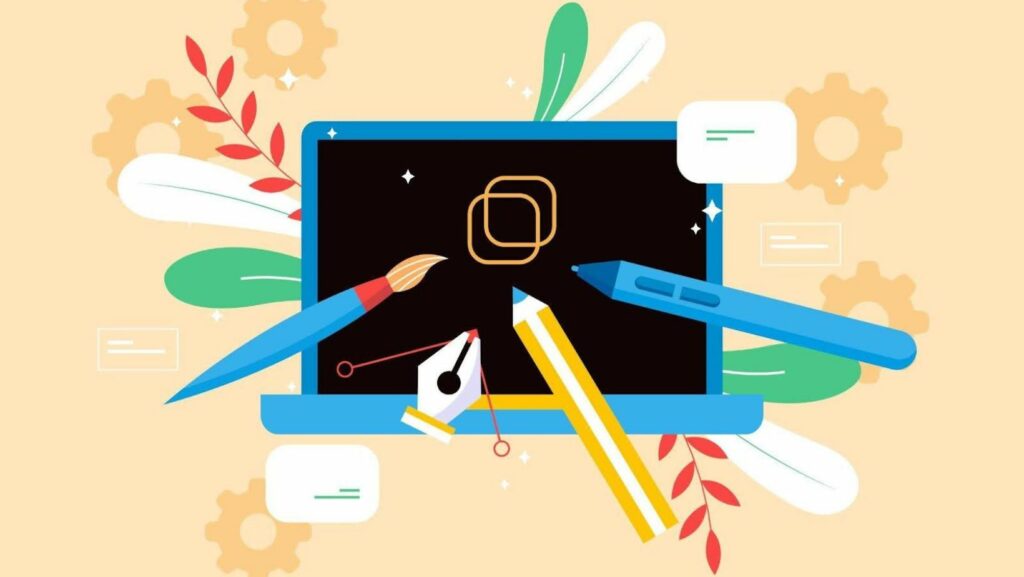If you’re a crafter, you know how important creative vision is. You likely start with a final vision and work backwards to map out each step. Now, imagine if there were a way to take your craft projects and speed them up without sacrificing quality or your creative concept. That’s exactly what digital crafting tools are designed to deliver. Some tools may be geared toward professionals, but hobbyists can still benefit greatly.
Think of this as your user-friendly guide to innovative digital crafting tools you didn’t know you needed. Chances are, after you read this list, you’ll want at least a couple for your next crafting project.
Virtual Pattern Generators
One of the best skills that crafters possess is their imagination. They dream up an idea and then put their crafting experience to use. Often, an idea is formed using some sort of inspiration. For those who consider themselves visual learners and are motivated by visual prompts, a pattern could be all it takes to spark an idea. Perhaps it’s a small sample of an image, a geometric print, a flower, or any other pattern. However, while inspiration may strike quickly, practical constraints like sizing often get in the way. Virtual pattern generators fuel your imagination with endless design possibilities.
A virtual pattern generator uses AI to seamlessly repeat the pattern as many times as you want or need. You won’t see obvious breaks or errors in the pattern either. When you use one of these AI pattern generators, you’ll often find extra tools, so you can get even more creative. You may want to enlarge certain elements, add personalization features, layer on other patterns, and more.
These AI pattern generator tools can be accessed online for free or for a fee—depending on the site and its features. Some offer already-made libraries you can work with as well. One popular example is Canva, a beginner-friendly platform that also offers a rich library of patterns.
AI Design Assistants
While we’re on the topic of using AI tools for crafting, there are also AI design assistants available. Again, an AI design assistant is a tool that can be used by any level of crafter. AI design assistants are fairly sophisticated, which can be a huge surprise to first-time users. Think of it as a professional assistant who can answer any design-related question or solve any problem you encounter. It allows you to work through projects faster and without making time-consuming mistakes.
Some of the questions an AI design assistant can answer include what kind of fabric to use, how to measure for the perfect fit, and tips on custom tailoring. You can also ask it to map out how the garment will fit using your own photos to visualize fit and explore designs tailored to your body shape. Typically, all you need is a measuring tape, and the AI design assistant takes care of the rest.
3D Fabric Visualizers
It’s not just AI tools that crafters will want. One of the most high-tech digital tools are 3D fabric scanners, which can accurately and quickly map out a digital example of your item. Once done, you can make changes, customize the item, and more. Because the image is 3D, crafters get an accurate visualization of the final project.
These capabilities open up a wide range of practical applications. The 3D fabric visualizer makes it possible to apply specific patterns, prints, and fabrics to existing pieces. An example of this is furniture. If you want to reupholster furniture but aren’t sure about what fabric will work, you can use the 3D visualizer to see countless options. You’ll make design decisions faster and with greater confidence.
Smart Fabrics
Smart fabrics are a niche innovation, so not every crafter will find them essential. Even so, smart fabrics are an exciting product that is poised to have a profound effect on clothing. Why not be part of a trend that is sure to continue picking up steam and evolving further?
If you’re not familiar with smart fabrics, you aren’t alone. They’re not exactly a mainstream item yet. Smart fabrics contain some form of integrated technology. It’s pretty mind-blowing to think that the fabric you choose can have smart benefits, but that’s where we are.
Manufacturers create smart fabrics by weaving microscopic computers or nanotech into the fabric. The technology is then meant to perform a specific task or provide a specific benefit or property to the fabric. Perhaps one of the most widely used purposes of smart fabrics right now is UV-protectant clothing. There are also smart fabrics that are designed to help create and retain warmth, ideal for winter gear.
More advanced smart fabric applications include RFID and NFC tags that adapt to temperature. Other innovations feature fabrics that monitor hydration and heart rate or wick away moisture for enhanced comfort. It’s a fabric revolution—one focused not just on fashion, but on functionality.
Crafting Gets a Digital Boost

Digital tools are meant to personalize the user journey and drive discovery. This is true across all industries, not just those in the crafting sphere. Whether it’s creative software, streaming services, or even all the rated casino apps for the Canadian market, algorithms and customization keep users engaged.
If crafting is your hobby, side gig, or career, learning to embrace the latest tech and trends can prove incredibly beneficial. While there is nothing wrong with classic tips and tricks, technology has enabled digital tools to help in ways you may not have imagined. Digital tools make your creations faster, more precise, and surprisingly seamless.

